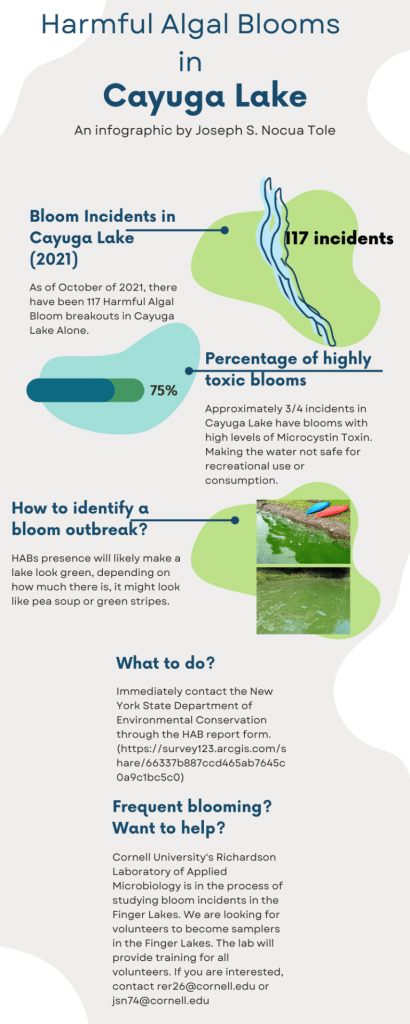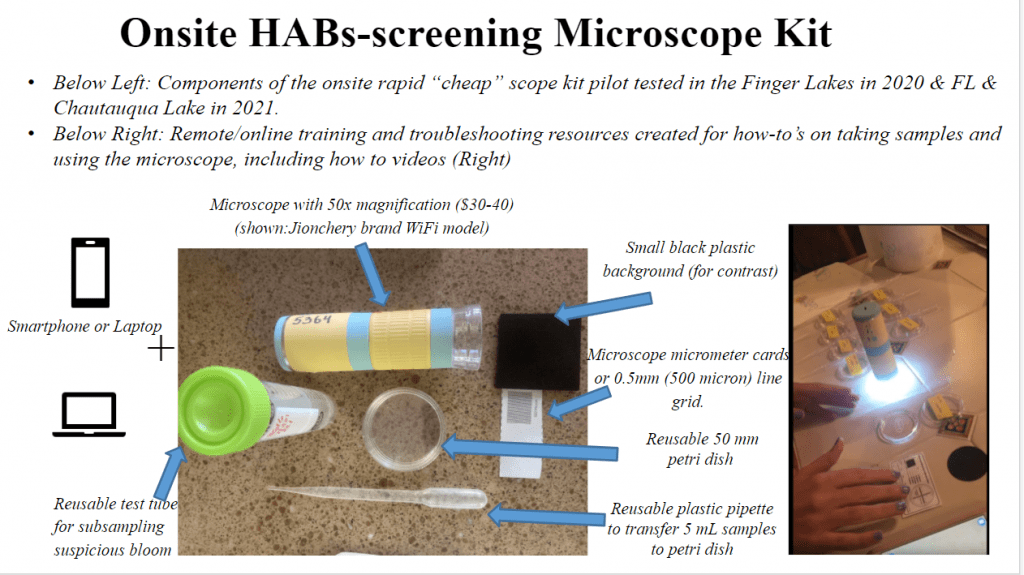Harmful Algal Blooms screening in freshwater
bodies
- Harmful Algal Blooms in freshwaters are cyanobacterial overgrowths driven largely by climate change and nutrient pollution. These overgrowths lead to depletion of dissolved oxygen in water, and, in some cases, lead to the accumulation of toxins in the water. Not only do these affect populations of animals and their ecosystem, but they also affect human health and enterprises such as tourism.
-
Multiple toxins can be produced during the HABs. Among these toxins, microcystin is the most intensively studied cyanotoxin. Ingested in sufficient concentration and quantity, this toxin can lead to permanent damage to the human hepatic system. and microcystin-LR was chosen by the EPA when monitoring toxin level advisories for drinking water (limit of 0.3 µg/L) and recreational waters (range from 4 to 20 µg/L depending on whether EPA or other agencies set the standard). Microcystin is a hepatotoxin (liver toxin), and the most common producer of it is Microcystis. However, not all Microcystis species make the toxin. Additionally a handful of other cyanobacteria can also make microcystin.
- These blooms have become an increasingly large issue in the Finger Lakes Region. The Ithaca area’s neighboring Cayuga Lake has been the lake with the most HABs reported since the statewide HABs monitoring program was established.
How does our work, well… work?
We have created an inexpensive microscopy kit using a $30 WiFi microscope that connects to a smartphone or laptop/tablet.
Full protocol and instructions can be found in these short videos:
- Video: demo for the sample processing and image collection process: https://drive.google.com/file/d/1zO2XFz2Dch9m7aoVMN4kWRniG0IxB4hf/view?usp=sharing
- Video: demo for image submission via google form: https://drive.google.com/file/d/1q4-Pu3r0wPyNVgoF8X7S7-WtVea5_ZTd/view?usp=sharing
Photo Intake Google Form:
Once we receive these pictures, we analyze them using image analysis algorithms and predict two things:
1. if you have a bloom at all (regardless of type of algae present) and
2. whether the bloom likely contains elevated microcystin toxin levels.
Let us know if you want to join our volunteer team to help us validate our kit in other lakes around the world,we will provide you with one of these kits.
Interested in joining us? Check out our Volunteer Hub!
Please read this document, as it contains access to all important tutorials and documents for volunteers (which are also available one by one later in this page):


